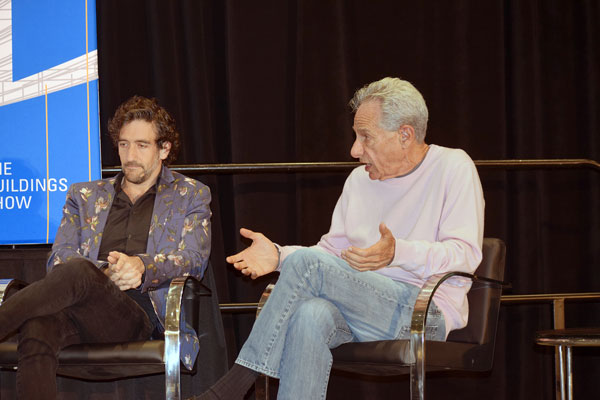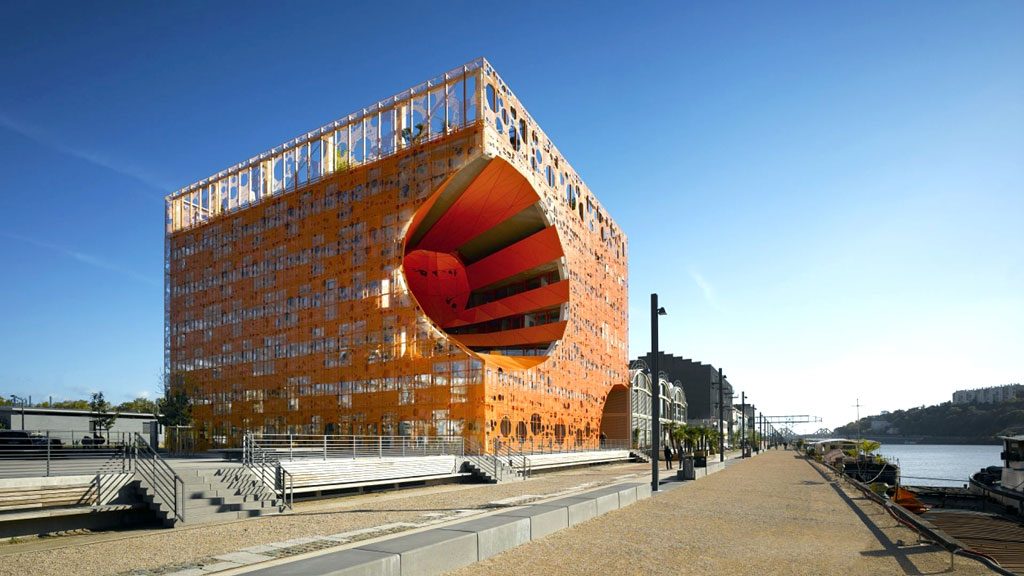An international panel of four architects presented distinct visions of the future of their profession recently at an event that featured a trans-Atlantic difference of opinion over how great a role designers should play in shaping policy on resilience to climate change.
The International Architectural Roundtable held in Toronto Nov. 28 as part of the Buildings Show featured Dominique Jakob, founder of the French firm Jakob + MacFarlane, Mels Crouwel, founding partner of the Dutch firm Benthem Crouwel Architects, Eric Moss, principal and lead designer of Eric Owen Moss Architects of Los Angeles, and Saskatoon-born Matthew Rosenberg, founder and design director of the M-Rad house of Los Angeles.
Jakob, as the first speaker, issued a direct challenge to her fellow architects on the environment file.
“We have a huge task ahead of us with everything that is happening with climate change right now,” she said citing a recent United Nations report.
“Things are going faster than we thought. I think we have a huge responsibility to really make a tremendous effort.”
Subsequent presenters didn’t share her sense of urgency, however, and when the subject was revisited later on in the session, Moss issued a divergent take. Today’s professionals tend to give each other sustainability awards and platinum certifications too easily, he said, at the expense of broader design goals.
“I think this is a hugely misunderstood subject,” Moss said. “I think it is not architecture’s task, nor is it within architecture’s capacity, to deal with the subject.
“I think architecture has a habit of glomming onto these things in a sort of do-gooder way. There is nothing wrong with that, it is not a pejorative. But I think it is disingenuous.
“There was a jury in Beijing the other day, somebody makes a big tower, and triple-glazes the thing and puts trees and presents it as a sophisticated piece of technology, when the entire conceptual model of the building from a different perspective is specious to begin with. If you have to triple-glaze the building, maybe the building should be imagined differently instead of lauding the engineering that makes it doable.”
Scoring points for being green does not make a building great, said Moss.

“That’s a piece of the discourse, but the content of architecture I think is much broader than that, and if you get points for doing good-guy stuff, and that makes it an exceptional building, I don’t think that’s true either,” he said.
Jakob said in an interview after the session she believes Moss’s comments may reflect a divide between Europeans and North Americans on sustainability.
“In Europe, we have been thinking of this a long time, there are more social works, we have been contributing to a lot of social housing programs, so I think maybe in France we are more aware of it,” she said.
“I think architecture has a big role in it, a public role, because the public sees you as responsible so we have to address that. The expectations are getting higher and higher.”
Jakob’s presentation highlighted several projects her firm has undertaken in France. The Cube Orange in Lyon and the bright-green Euronews Headquarters building, also a cube on the Lyon waterfront, are twin landmark heritage rebuilds.
“Greys, browns, people don’t dare to express themselves,” she said.
“It requires imagination. You have to be a bold person. Not everybody likes it. That’s OK, you are not there to please everybody.”
Crouwel also discussed heritage rebuilds, describing how aging utilitarian structures such as train stations in older European cities can be given new life.
Rotterdam central station, for example, was modernized with new treatments creating attractive new plays of light and shadows.
For a heritage museum in Amsterdam, his team developed an attention-getting new canopy entrance using a newly created composite material that was painted with airplane paint that stays shiny longer, he said.
To upgrade another public space, creating a pedestrian and cyclist tunnel, Crouwel’s firm employed a graphic designer who hand-painted tiles in a style from the 1700s.
“With old techniques you can create beautiful new scenes,” said Crouwel. “So the future is also in the past.”
Rosenberg took the discussion on his profession in a different direction, laying out how he had arrived in Los Angeles with a plan to “revolutionize the industry.” M-Rad tackles pre-and post-architecture functions such as branding, site-sourcing, researching, capital sourcing and underwriting in an attempt to reinvent the role of the designer.
Even stock architecture builds get innovative treatments that create a splash, he said — on one job, there were small buildings to be demolished ahead of a site redevelopment, so M-Rad painted them all pink in the interim and immediately attracted news crews to the site.
In the end, M-Rad has created a name for itself as an innovator, and the extra revenues derived from the firm’s varied functions enable Rosenberg to undertake specialty niche projects such as developing luxury homes that he puts on the market on spec.











Recent Comments